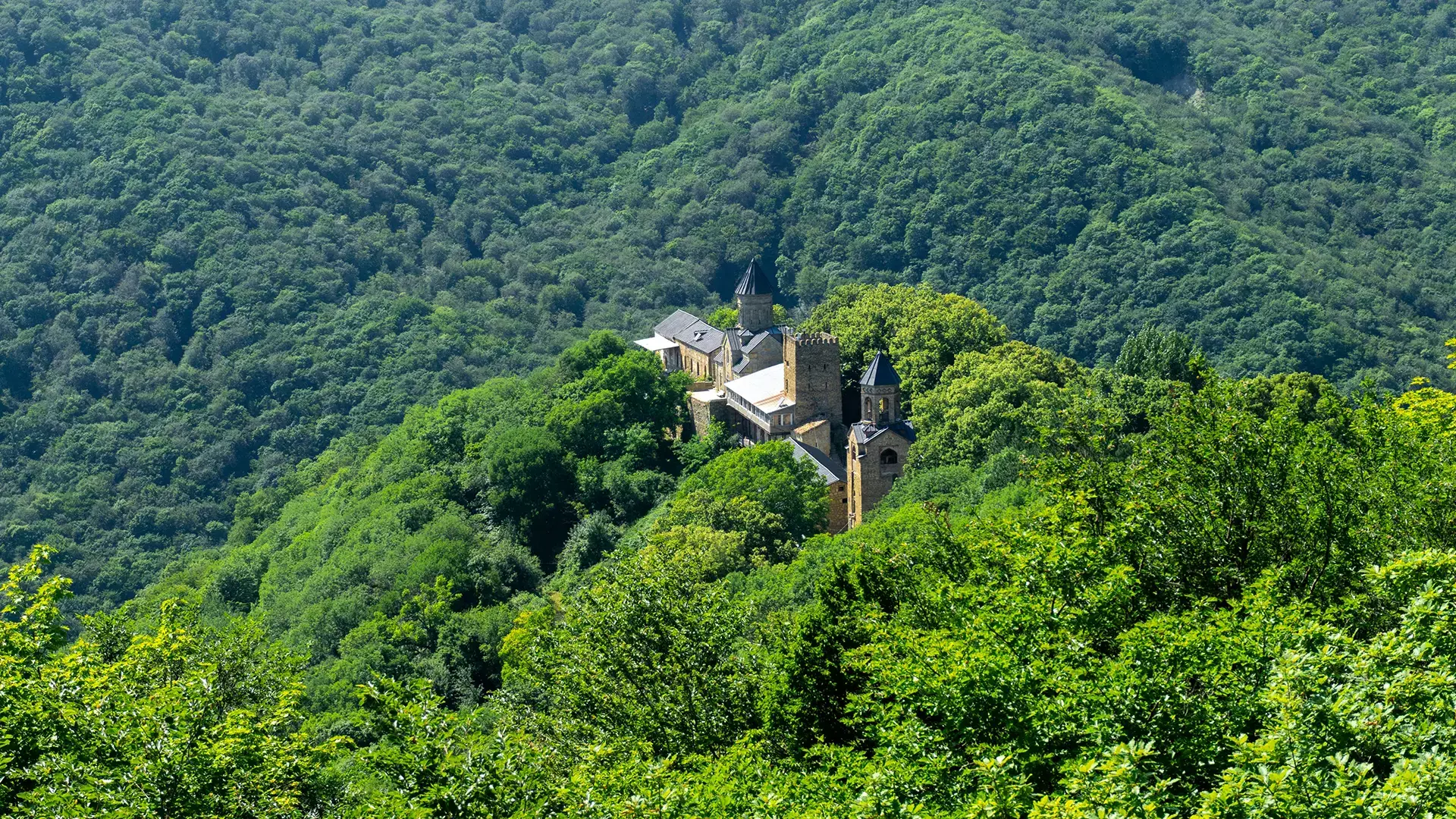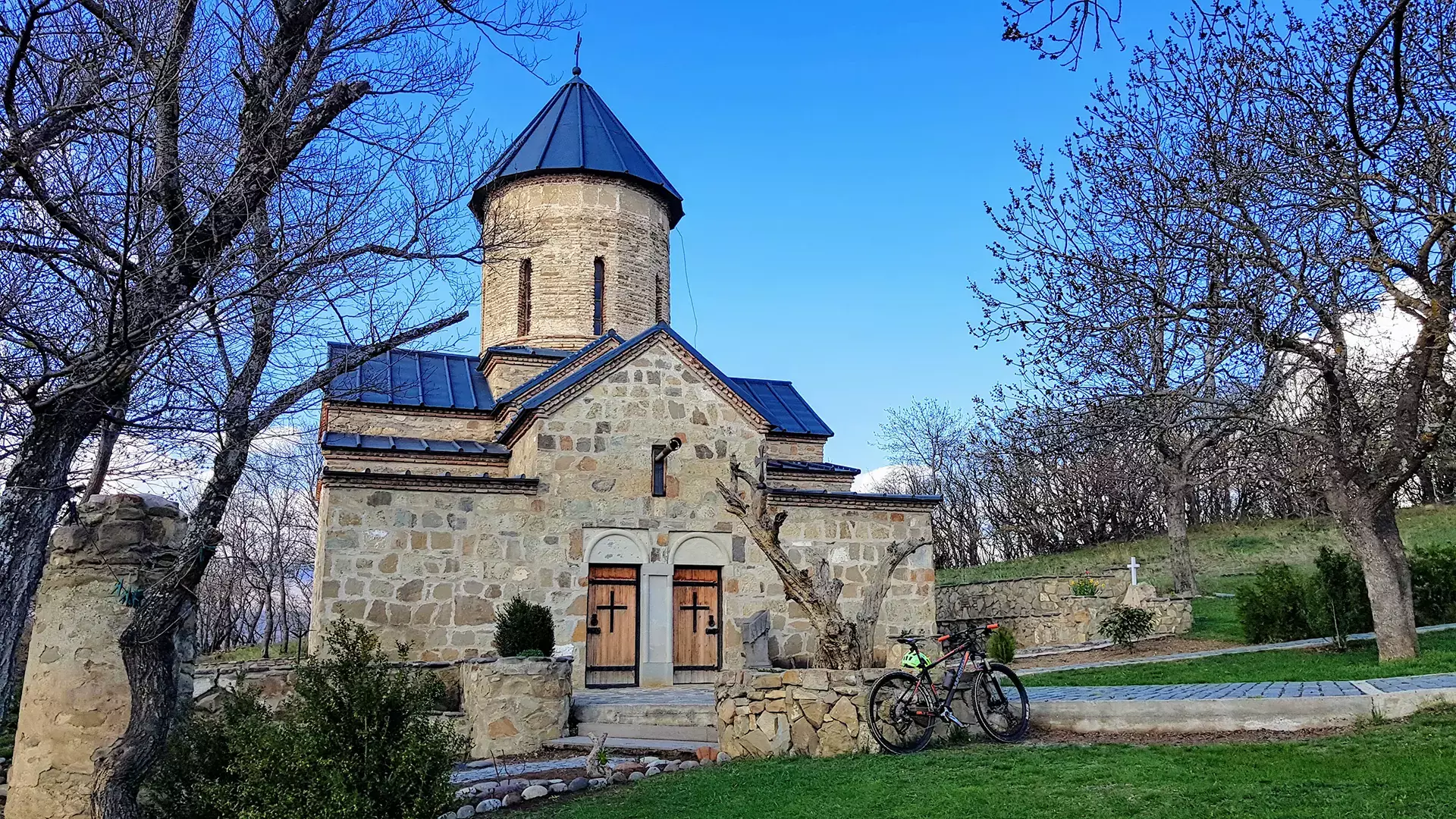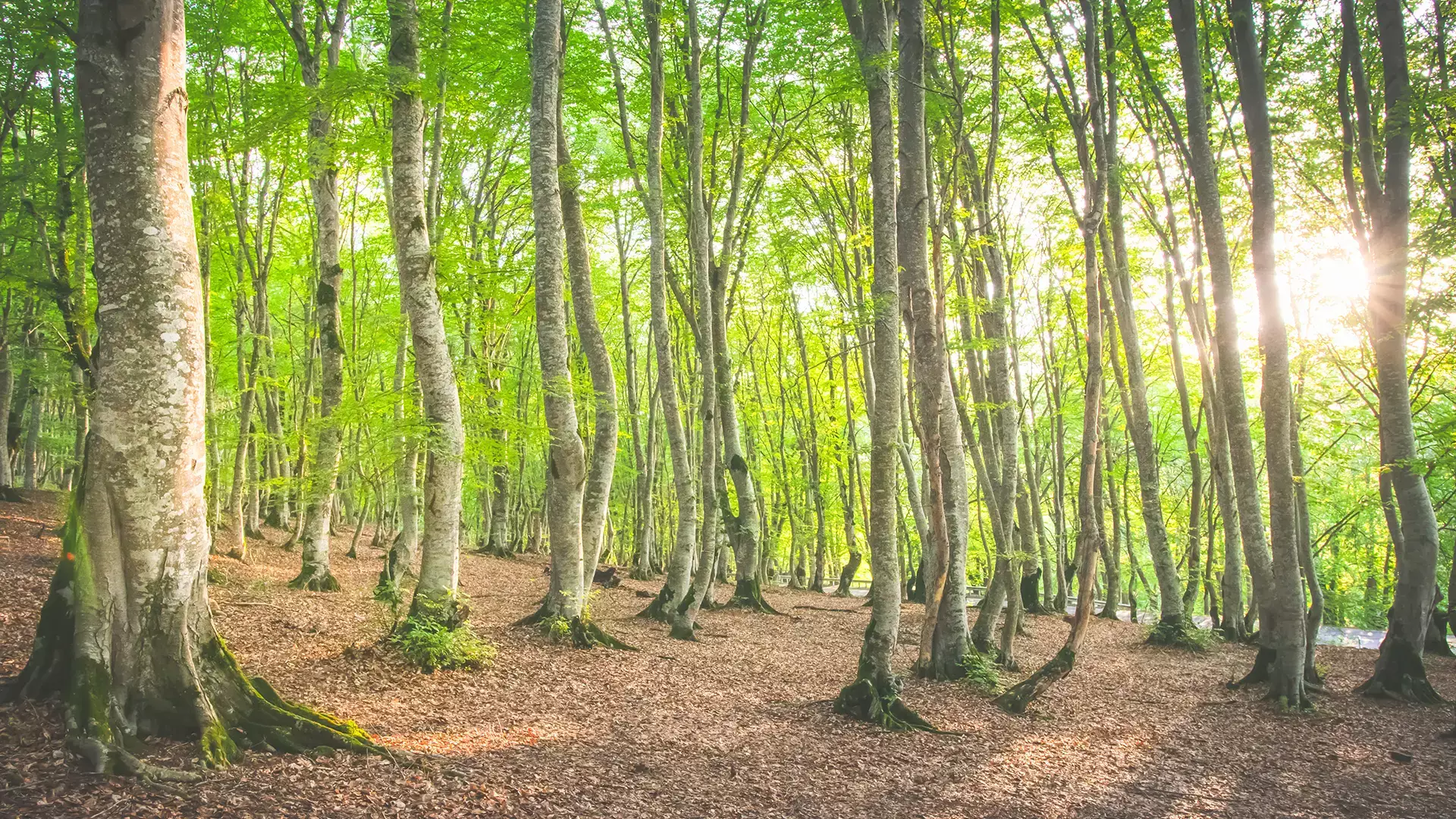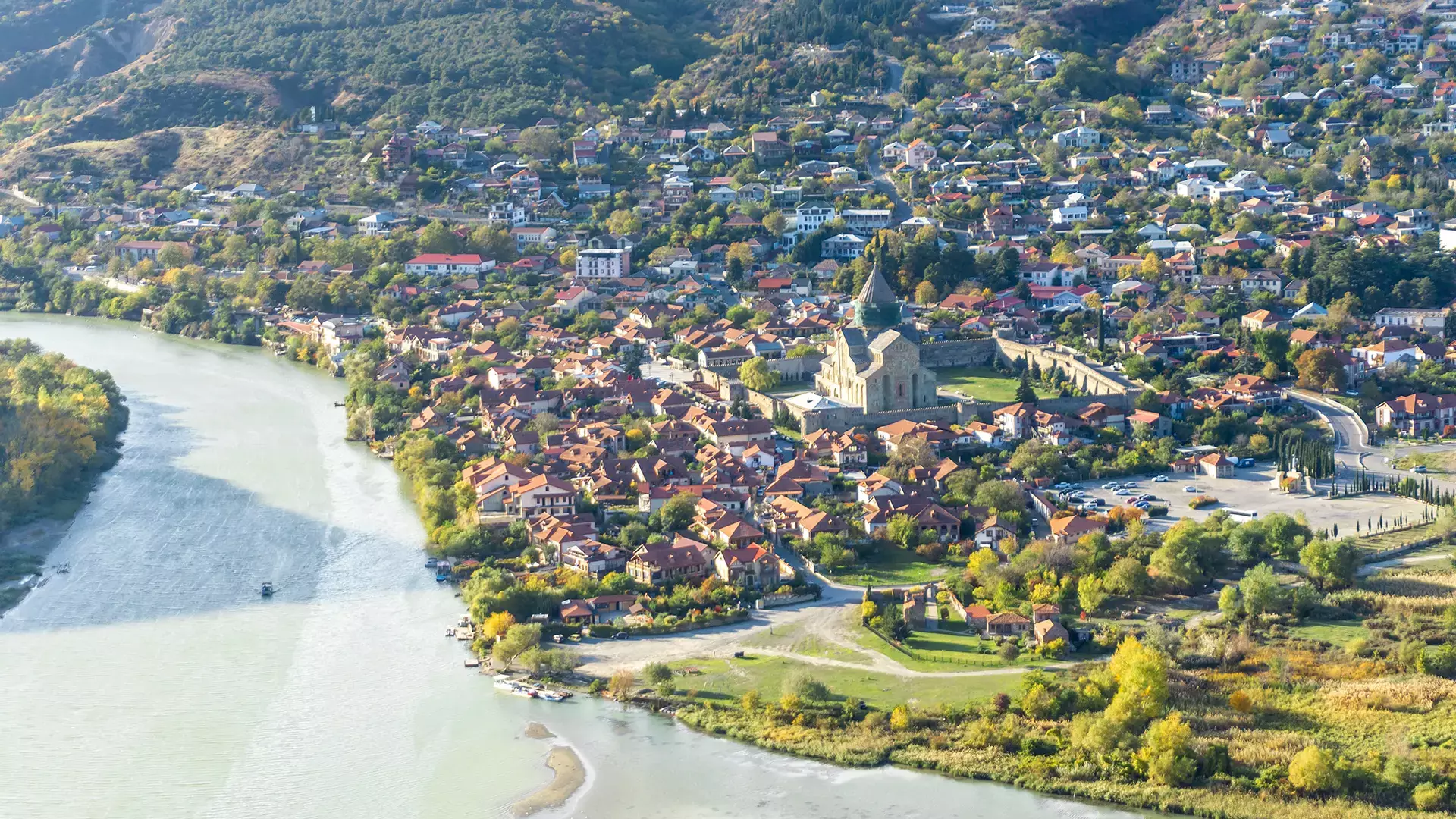Tbilisi National Park
Geographical Location and Features
Tbilisi National Park is located on the southern slopes of the main Caucasus Ridge, extending over the Saguramo-Ialno Ridges. The park’s total area exceeds 21,000 hectares, with the majority of it located in the Mtskheta-Mtianeti region, and smaller sections in Tbilisi and Kvemo Kartli. The territory is divided into five major zones: Saguramo, Gldani, Martkopi, Ghulelebi, and Gardabani.
The altitude ranges from 600 to 1,700 meters above sea level. Its diverse terrain includes plains and mountainous areas with deep gorges, steep slopes, and meadows. Its climate is moderate, with an average summer temperature of 24-26°C and an average winter temperature of around 0-2°C.
The park’s flora is highly diverse and includes deciduous and coniferous forests and subalpine vegetation, with a total of 675 plant species recorded. Wildlife includes the Caucasian noble deer (listed in Georgia's Red List), lynxes, brown bears, wolves, foxes, jackals, etc.
Brief Historical Background
Tbilisi National Park was established in 1973, merging Mamkoda Memorial Park and the Gldani, Martkopi, Ghulelebi, and Tskhvaritchamia forest areas. The goal was to expand green zones around Tbilisi and Rustavi, and to promote environmental health.
The park's borders were officially defined on 1 January 1974. During the 1970s, the park’s infrastructure was developed actively, with multiple picnic areas, tourist trails, and recreational zones popping up. Special attention was paid to restoring and preserving historical monuments including important sites like Mamkoda Monastery in Mtskheta-Mtianeti and Martkopi Monastery in Kvemo Kartli.
During the country's complicated political and economic situation in the 1990s, the park lost its national park status. I was reinstated in 2007, with new borders. The new park included parts of its former territory and the Saguramo State Reserve. In 2011, the park’s borders were revised again, cutting out specific sections of the Tbilisi Sea Forestry Zone and Tbilisi Dendrological Park.
Today, the territory is managed according to the Law of Georgia on the System of Protected Areas. The park’s primary mission is biodiversity conservation, although its administration is actively working on developing ecotourism here as well. Several significant projects have been implemented in recent years to improve infrastructure, mark trails, and update informational signage.
What Activities and Services Does the Park Offer Visitors?
The park offers visitors a variety of activities. The trail system in Tbilisi National Park includes cycling, hiking, and horseriding trails. Trails accessible to visitors are marked and equipped with informational boards.
For those wanting to have a picnic, the park has several designated areas with the necessary infrastructure such as fire pits, benches, tables, and restrooms. Camping areas for setting up tents are available separately.
Hiking routes vary significantly in terms of difficulty and duration. The most popular routes are the Saguramo Ridge and Mamkoda-Zedazeni. Both are considered moderately challenging, although many find the Mamkoda route difficult due to its steep sections and overall length. The Saguramo Ridge hike is approximately 11 km round-trip and takes 4-5 hours (without accounting for stops), and the Zedazeni-Mamkoda route is about 15 km and requires around 6 hours. There are designated picnic areas and campsites along the routes.
For cyclists, there are three trails of varying difficulty. The easiest trail is on flat ground around the perimeter of Saguramo forest and is ideal for beginners. The intermediate trail follows a forest road, with some ascents and descents to navigate. The most challenging trail is intended for experienced cyclists, where the terrain is mountainous in some sections and requires a proper mountain bike.
Horseriding is only available on supervised guided tours and must be reserved in advance. Visitors can book either short 2-3 hour rides or full-day trips. The riding routes are designed to showcase the best views and explore the most important historical monuments in the area.
How to Reach Tbilisi National Park
The park can be reached by car or public transport.
The public transport operates only from the capital city of Tbilisi. Marshrutkas (minivans) depart from Didube bus station every 30 minutes, and the journey takes about one hour. If a direct service to Tbilisi National Park is not available, you can board a Tskhvaritchamia-Tianeti transport, as it travels along the same highway. Transportation schedules may vary depending on the season and weather conditions, so it’s best to check in advance.
Unfortunately, there is currently no public transportation from other cities in Georgia to the park.
If traveling by car, it takes approximately 1 hour and 10 minutes from Tbilisi. The road is in good condition and fully paved up to the main entrance. If driving from other cities, it’ll take about 1.5 hours to reach the park from Rustavi, 2.5 hours from Telavi, 3.5 hours from Kutaisi, and 6 hours from Batumi.
The main entrance to the park is located on the Gldani side, where you’ll find a parking area and a Visitor Information Center.
Nearby Landmarks
There are many historical and cultural landmarks both inside the park borders and around. Some of the most notable ones include:
Mamkoda Monastery - A monastic complex located within the park. It includes the 19th-century churches of the Virgin Mary and Saint George, a bell tower, and remnants of the surrounding wall.
Martkopi Monastery - Founded in the 6th century by St. Anton Martkopeli, one of the 13 Assyrian Fathers, it was granted the status of a national heritage monument in 2006. The Martkopi Monastery Complex consists of several churches (the main one being the domed church of the "Acheiropoieta"), a bell tower, and monks' cells.
Sabaduri Forest - Known as one of the park’s most beautiful areas, Sabaduri Forest is a popular photo-op spot attracting many visitors, particularly in autumn and winter. The forest has well-maintained picnic and rest areas, fire pits, and restroom facilities.
Mtskheta - The historic capital of Georgia, Mtskheta, is a UNESCO World Heritage site. It is about a 30-minute drive from the park, and its key sights include Svetitskhoveli, one of Georgia's principal cathedrals. It dates back to the 11th century and is recognized as a masterpiece of Middle-Age Georgian architecture. Another highlight here is Jvari Monastery, built in the 6th century on a rocky mountaintop and towering over Mtskheta and the highway.
Ksani Fortress - An early 16th-century fortification complex. The remains include walls constructed from river stones, two cylindrical towers, and a water supply system. It was granted national heritage status in 2006.
Cookie Policy




